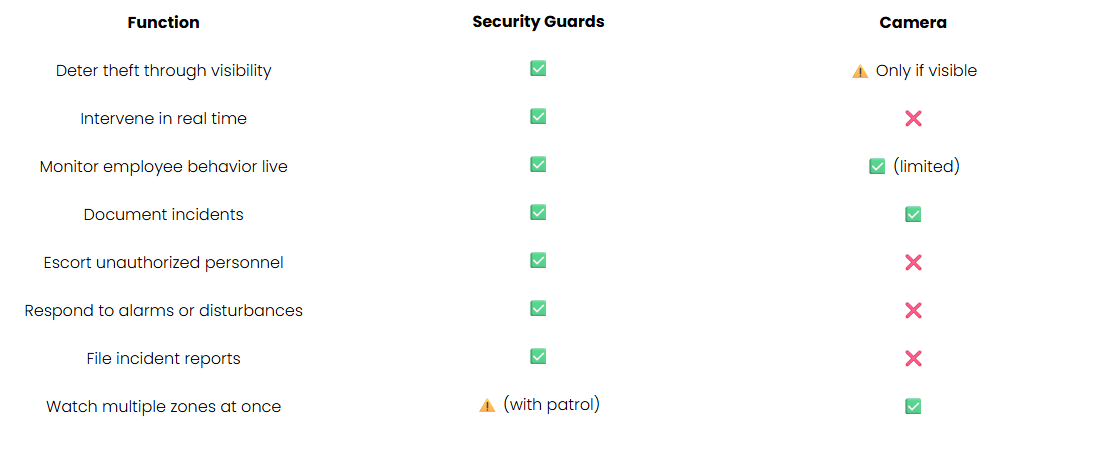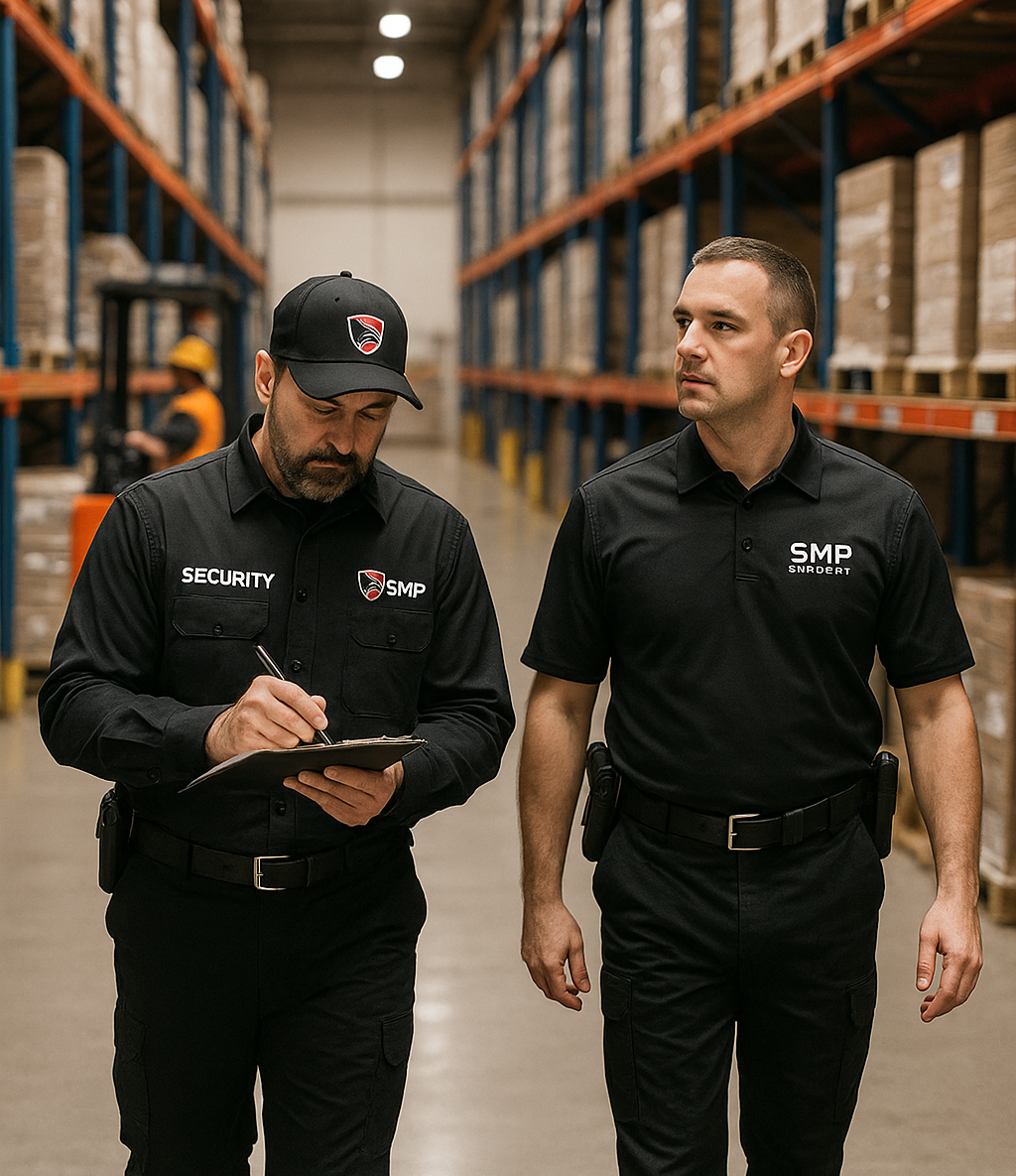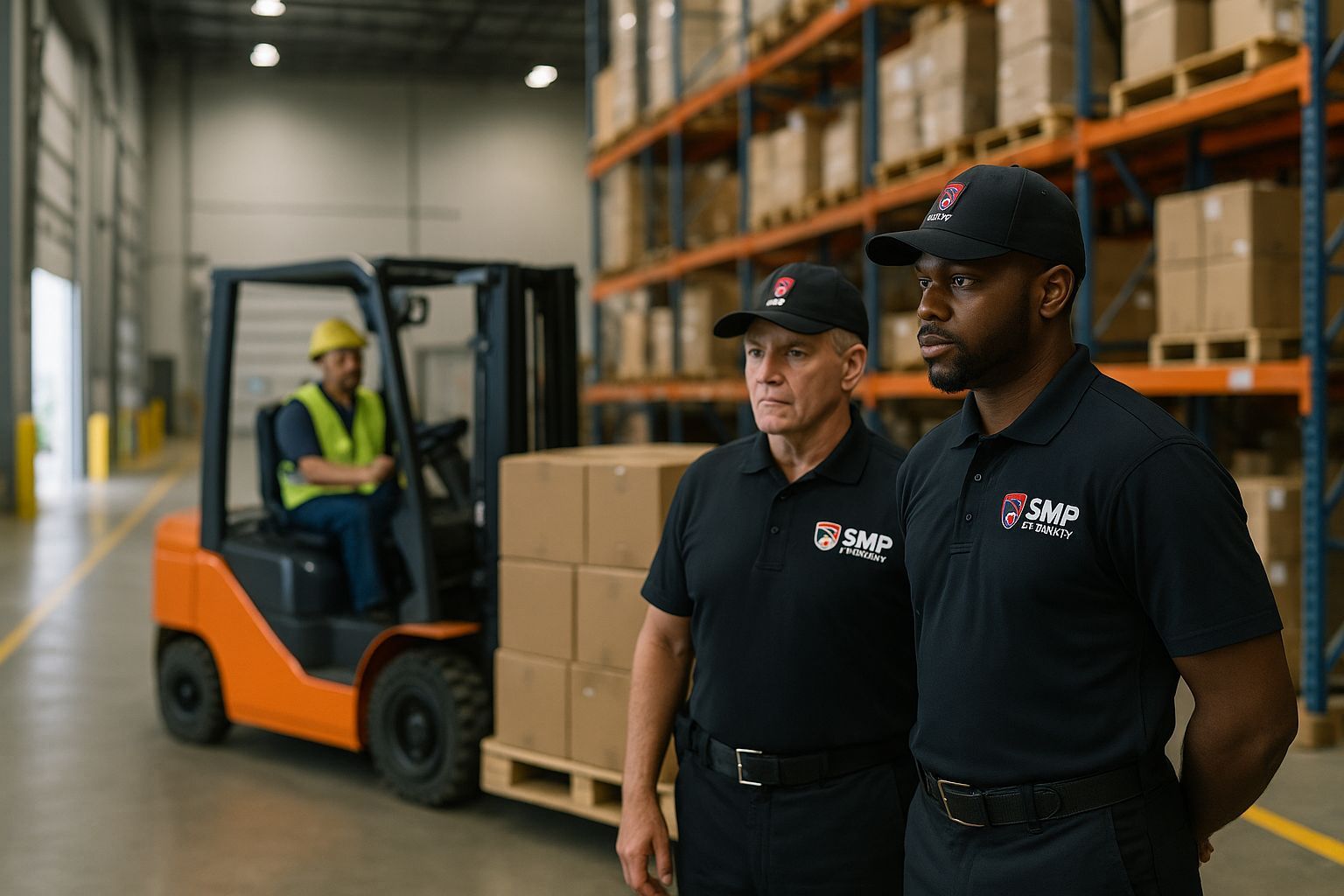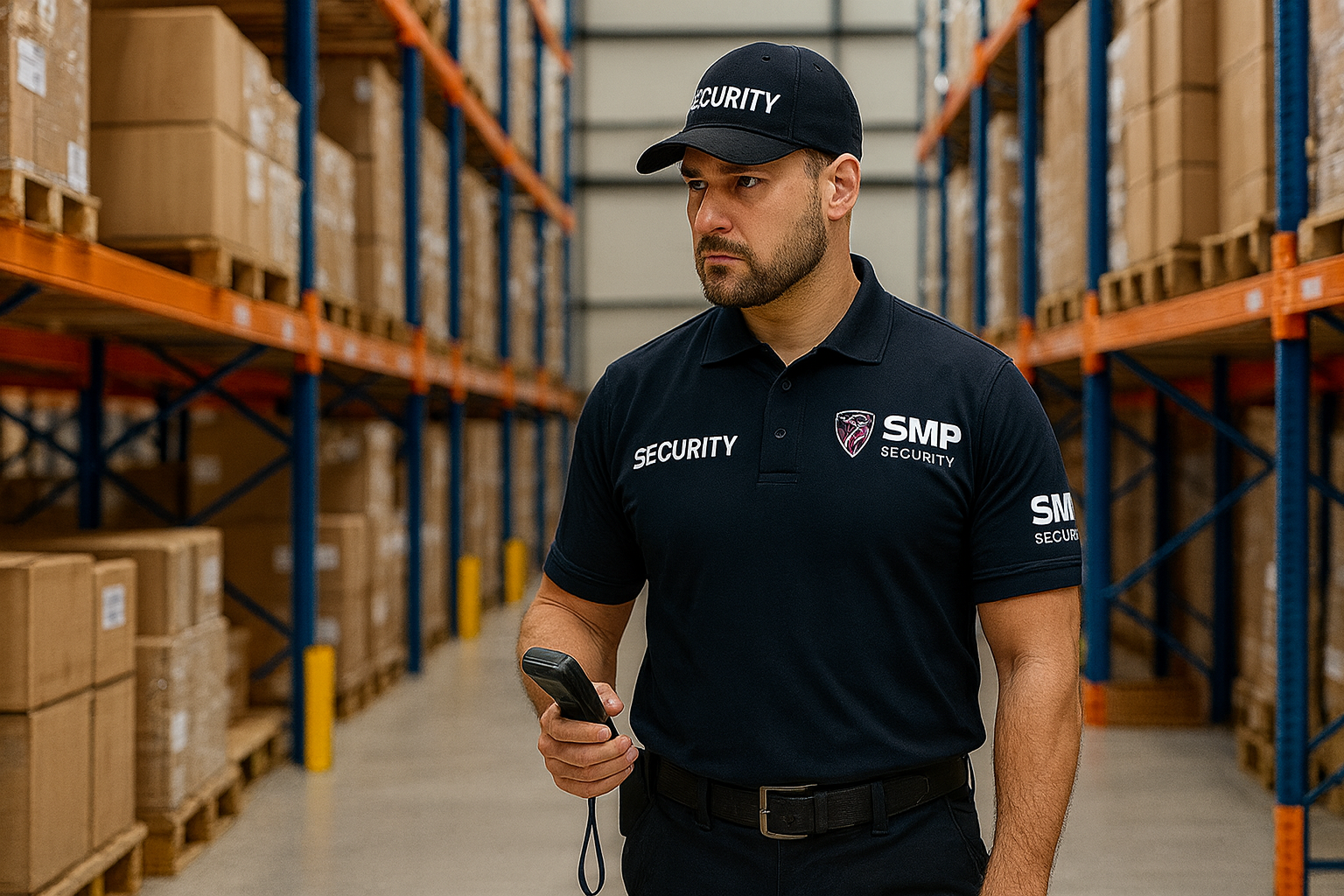Warehouse Security Guards vs CCTV – Why You Need Both
Why Sioux Falls Warehouses Need Both
If you’re running a warehouse in
Sioux Falls, chances are you’ve already installed security cameras—or you’re planning to. That’s a smart step.
But here’s the truth: CCTV alone can’t stop theft, prevent unauthorized access, or respond to emergencies.
That’s why the most secure facilities rely on a hybrid approach: trained warehouse security guards working alongside modern surveillance systems. Together, they provide a level of protection neither can deliver alone.
In this article, we’ll break down the strengths and weaknesses of cameras and guards, explain why Sioux Falls warehouses need both, and show how integration creates safer, more compliant facilities.
What Warehouse Security Cameras Can Do (and Can’t Do)
CCTV systems provide visibility and documentation. They capture activity, help reconstruct timelines, and support investigations.
CCTV systems are good for:
- Monitoring multiple zones at once
- Capturing visual evidence for liability or insurance claims
- Acting as a visible deterrent
- Supporting incident reports after the fact
But here’s what they
cannot do:
- Physically stop an intruder
- Intervene in real time
- Escort unauthorized individuals off-site
- Ask questions or de-escalate conflicts
That’s where warehouse security guards step in.

What Warehouse Security Guards Add to the Equation
A
trained
warehouse security guard in Sioux Falls fills the gaps cameras can’t cover. They are the
eyes, ears, and voice on the ground.
Guards can:
- Control access and verify credentials at entry points
- Spot suspicious behavior in real time
- Respond immediately to alarm triggers
- Patrol blind spots your cameras miss
- Intervene in theft or workplace safety violations
Unlike cameras, guards provide
deterrence through presence and the ability to
act immediately.
Common Blind Spots in Warehouse CCTV Systems
Even the best-designed systems leave vulnerabilities. In Sioux Falls warehouses,
blind zones often include:
- Loading dock dead angles
- Exterior perimeters and fences
- Between tall shelving units or machinery
- Low-light corridors
Guards can patrol these areas, detect risks, and take action before issues escalate.
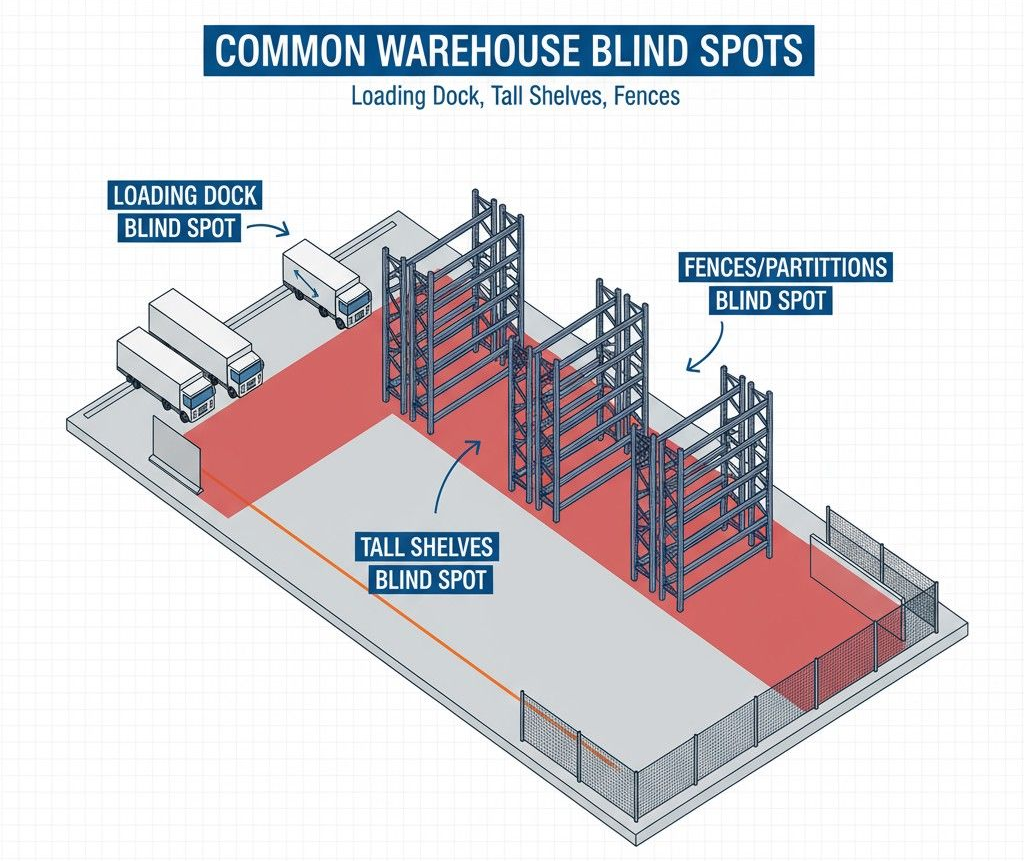
Why the “Either/Or” Approach Doesn’t Work
Relying only on cameras creates a false sense of control. By the time theft is noticed on footage, the damage is already done.
Conversely, using only guards limits visibility and weakens documentation.
The
most effective
warehouse security setups in Sioux Falls combine:
- Cameras for coverage and evidence
- Guards for prevention and rapid response
It’s not about choosing one—it’s about
leveraging both together.
The Real Value of Integration
When guards and surveillance systems work together, warehouses gain a layered defense:
- Guards monitor cameras during low-activity shifts
- Footage verifies incidents and supplements reports
- Supervisors audit guard patrols via GPS or timestamps
- Response times to alarms improve significantly
- Guards detect when cameras are misaligned or offline
This integrated system not only reduces risk but also
increases accountability and compliance.

Sioux Falls Warehouses That Use Both Are Safer
At SMP Security, we’ve seen firsthand that Sioux Falls warehouses using both
guards and CCTV experience:
- Lower theft and incident rates
- Faster dispute resolution
- Fewer blind spots
- Greater compliance with OSHA and insurance guidelines
Facilities across
North Industrial Park,
Foundation Park, and the greater Sioux Falls area rely on this layered approach to stay ahead of threats.
FAQs About Warehouse Security in Sioux Falls
Do warehouse security guards replace CCTV?
No. Guards provide real-time response and prevention, while cameras provide documentation. The most secure Sioux Falls warehouses use both.
How much do warehouse security guards cost compared to CCTV?
CCTV involves a one-time setup plus monitoring fees, while guards are an ongoing service. However, guards often prevent incidents that cost far more than their service fees.
What are the most common warehouse blind spots for CCTV?
Loading docks, exterior fences, tall shelving aisles, and low-light areas. Guards can patrol these areas to close gaps in coverage.
How do warehouse security guards improve OSHA compliance?
Guards can monitor for unsafe behaviors, enforce access rules, and provide incident documentation, which helps warehouses meet OSHA and insurance requirements.
Final Thoughts
Cameras are essential—but they can’t replace the
human element. When paired with trained
warehouse security guards, CCTV becomes part of a smarter, more responsive security system.
If you’re serious about protecting your Sioux Falls warehouse from theft, vandalism, or liability issues, don’t settle for a one-dimensional solution.
Need to Budget for Warehouse Security?
We’ll walk your site, assess your risks, and provide a tailored quote—no pressure, no guesswork. Whether you need full-time overnight coverage or just an extra set of eyes during shipping hours, we’ll match the right coverage to your budget.
Serving all of Sioux Falls, including Foundation Park and North Industrial zones.



